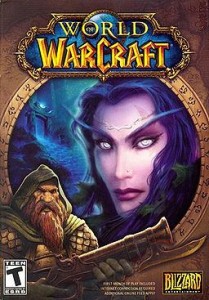 What can we learn from online computer games about content marketing for business? A lot, apparently. If you write content designed to trigger action in readers, pay attention to this.
What can we learn from online computer games about content marketing for business? A lot, apparently. If you write content designed to trigger action in readers, pay attention to this.
My husband, Attila the Honey, plays World of Warcraft, an online game that’s part of the multi-billion dollar gaming industry. If you think computer games are just for kids or young people with too much time, think again. Money spent on games has now surpassed movies and books.
(He swears that his online gaming is market research for his company Razerzone.com, but I don’t buy it.) I do believe it’s true that online games are good for your brain as we age. He’s speaking this weekend at the local Lake Chapala Society about this.
I just watched Seth Priebatsch, a Princeton dropout (something he’s proud of), who’s chief ninja at SCVNGR (“scavenger”), on the online speakers site TED.com. If he’s speaking at a TED conference in Boston, he’s got to have something important to say, right? You can watch it here. (A big thanks to Susan Weinschenck for this link.)
Here are three dynamics we can learn from online games that can be applied to content marketing:
- Appointment dynamics: this persuasion trigger is probably what Cialdini would call the scarcity or urgency factor. There’s no greater example than Happy Hour in bars: show up at a certain time, you get rewarded. It’s also at play in the game Farmville, a popular game that already has 70 million players. How can you use this to persuade readers to take action? Think about your business and how you could include an appointment dynamic to urge responses. (Like all things, there’s a cool way to do this, and a way NOT to do it!)
- Influence and Status dynamics: When games confer a red badge or gold or virtual money to players, their ego and pride causes them to continue playing. What ways can you inspire loyalty and engagement with your readers/ clients /prospects? What’s in it for them? How can you use the status trigger to persuade people to use your services or products?
- Progression dynamics: When LinkedIn shows a bar graph to indicated your level of participation, users want to do what it takes to push the bar up to 100%. Games use this dynamic to keep players engaged by offering rewards for levels and achievements. People want to see the progress bar increase. How can you use this dynamic to trigger frequent users, subscribers, engaged readers?
I’m not a “gamer,” except for Majong Masters, and a few card games. I’m waiting for the right fantasy game to come along that interests me. Games are interactive and require the brain to engage in ways that reading a book doesn’t.
Now, after watching Seth’s video on TED, I’m even more curious because they are using game dynamics for marketing tactics. Granted, many of these triggers aren’t new. What’s new is the application of fun and brain challenges by marketers to get consumers to like a brand better. Hopefully consumers will enter into branded games with eyes wide open.
Priebatsch makes the claim that this past decade was one where we created social networks online, and this next decade will be the gaming decade. Companies will begin to harness the power of consumer engagement through use of games and gaming dynamics.
I think this has already started and he’s right. What do you think about all this? Smart marketing or manipulative?














Recent Comments